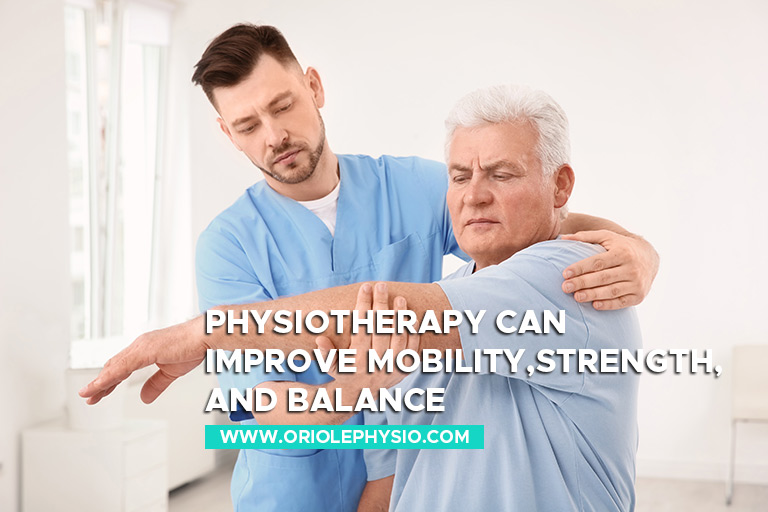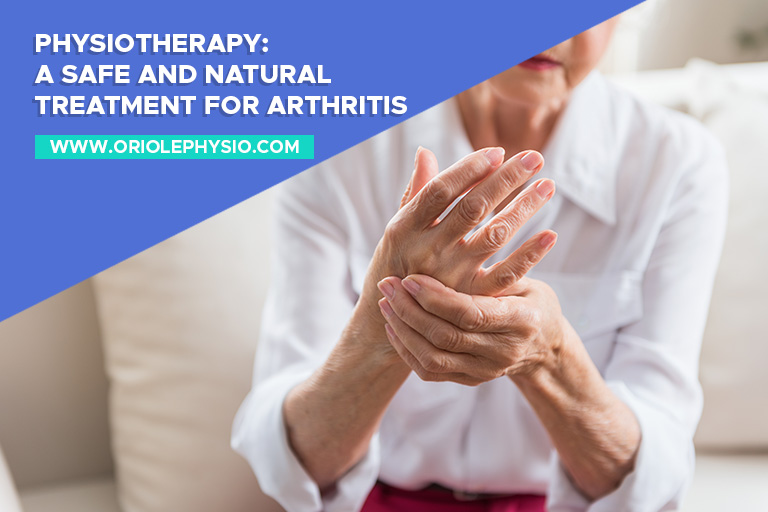Physiotherapy: A Safe and Natural Treatment for Arthritis
Arthritis can affect people of every age. However, the risk increases with a person’s age with about 1 in 2 seniors aged more than 65 struggling with arthritis. Additionally, health professionals claim that the prevalence of arthritis is on the rise—50% more individuals will suffer from arthritis by 2040.
Because arthritis affects the hands, neck, lower back, knees, and hips, people living with this condition often find it challenging to carry out daily activities, such as doing household chores and running errands. Due to the symptoms of arthritis, some may require assistance.
What Are Your Treatment Options?
The pain caused by arthritis can be debilitating, which impacts the quality of life. Unfortunately, health experts have not yet discovered the cure for this condition. However, there are various options for pain management including medication, physiotherapy, and in severe cases, surgery to ease pain and restore joint movement.
While medications help control the pain and discomfort, physio techniques for arthritis use a safe and natural process to help get you moving effectively and painlessly. People living with arthritis experience stiff joints, which limits their movement.
Physiotherapy for arthritis can help alleviate chronic pain while gradually weaning you off high doses of medication. A physiotherapist will create a personalized therapeutic arthritis physiotherapy exercise plan to improve joint mobility, flexibility, and strength. Also, the treatment program not only focuses on a single affected area but also addresses all areas of the body.
For instance, if you struggle with arthritis in the knees, the physiotherapist will create an exercise program that does not only address the pain in your knee but also target the lower back, hip, and ankle to maximize knee control and mechanics. The treatment plan may also include the correct techniques for lifting and carrying objects and squatting. Part of the treatment program is educating you on the proper posture and body mechanics to improve function or how to effectively use walkers, canes, and other assistive devices. Also, physiotherapists can offer recommendations on using custom knee braces, stockings, and orthotics. You can learn various arthritis pain relief techniques and slow down the degenerative joint disease.
Can Physio Help With Arthritis?

Among the many benefits of physiotherapy for arthritis are improved mobility and function. Its primary purpose is to restore the function of the affected to enable patients to regain their quality of life—perform daily routines and enjoy the activities they love.
Treating arthritis with physiotherapy comes with numerous benefits, including better mobility control, improved posture, and pain management, while mitigating future risks.
Physiotherapy uses different techniques to improve arthritic joint function, as well as ease pain and swelling, allowing you to get back to your life.
- Increasing Joint Range of Motion
Arthritis can stiffen the joints, but physiotherapy can restore flexibility to increase the joints’ range of motion. Even minimal improvement in flexibility can make an impactful difference. For instance, bending your arthritic knee just 10 more degrees enable you to get in and out of lower chairs comfortably with lesser pain.
- Strengthening Muscles Around Arthritic Joints
The erosion of the protective cartilage in and around the joint can result in painful friction between the bones in the joints. Physiotherapy-guided exercises can help strengthen the surrounding muscles that support the joint to reduce friction. By identifying the impaired areas, the physiotherapist can effectively create a treatment place to address and improve these impairments to boost strength and stability in your joints.
- Adjust Posture
Practicing proper body posture can reduce the stress off your painful, swollen joints. Physiotherapy can help improve your posture when sitting, standing, and walking to lessen the pressure on your joints. Small, simple changes in your posture can make your daily routine easier.
- Improve Balance
Decreased joint function and mobility, pain, discomfort, and muscle weakness due to arthritis can cause balance problems. If you find yourself struggling with balance, a physiotherapy professional in North York can recommend balance components in addition to functional strengthening exercises in your treatment plan.
Since joint problems progress with age, finding the right pain management techniques can help manage the symptoms well and improve the level of joint function. Experiencing prolonged arthritic pain does not indicate ongoing pain in the future. Being able to manage the symptoms early and working with a certified physiotherapist can make a significant difference in terms of better control over your day-to-day routine and activities.
Physiotherapy Treatments

Several forms of physiotherapy treatments can help alleviate pain caused by inflammatory arthritis. We rounded some of the most common physiotherapy treatments to help manage the symptoms of arthritis.
- Ice Packs & Heat Packs
The application of ice packs on the arthritic joints can soothe swelling and inflammation. On the other hand, applying heat on the swollen joints helps promote blood circulation to ease the pain. No access to ice or heat packs? Simply soak a clean flannel cloth in a basin filled with warm or cold water. While this option works similarly with heat or ice packs, be sure to get the temperature right to prevent the risk of injuring yourself.
- Massages
Massage therapy provides numerous arthritis sufferers with soothing and therapeutic effects. It helps improve blood flow and loosen stiff muscles surrounding the joints. After each session, you may notice less pain, improved mood, and a better range of motion.
- Acupuncture
Acupuncture aids pain relief by stimulating the brain to generate endorphins, our body’s natural painkillers. It involves the insertion of thin, specialized needles to stimulate certain acupuncture points to relieve pain and illnesses. While acupuncture is a traditional Chinese medicine, physiotherapists are trained to carry out this form of treatment.
- Exercise
It may seem a bit odd, but physiotherapists recommend that patients with arthritis engage in exercise. The best way to go is a graded exercise (where you start off slowly and gradually increase the intensity) but with the guidance of a physiotherapist. This helps strengthen your joints and muscles while improving your overall fitness.
These are just some of the many physiotherapy treatments for arthritis. However, your physiotherapist will likely recommend the ones that are ideal for your needs. Living with arthritis can be challenging, but with physiotherapy, you will feel like your old self again.
Call Oriole Physiotherapy & Rehabilitation Centre at (416) 221 0772 to book a session for physiotherapy in our North York clinic.



